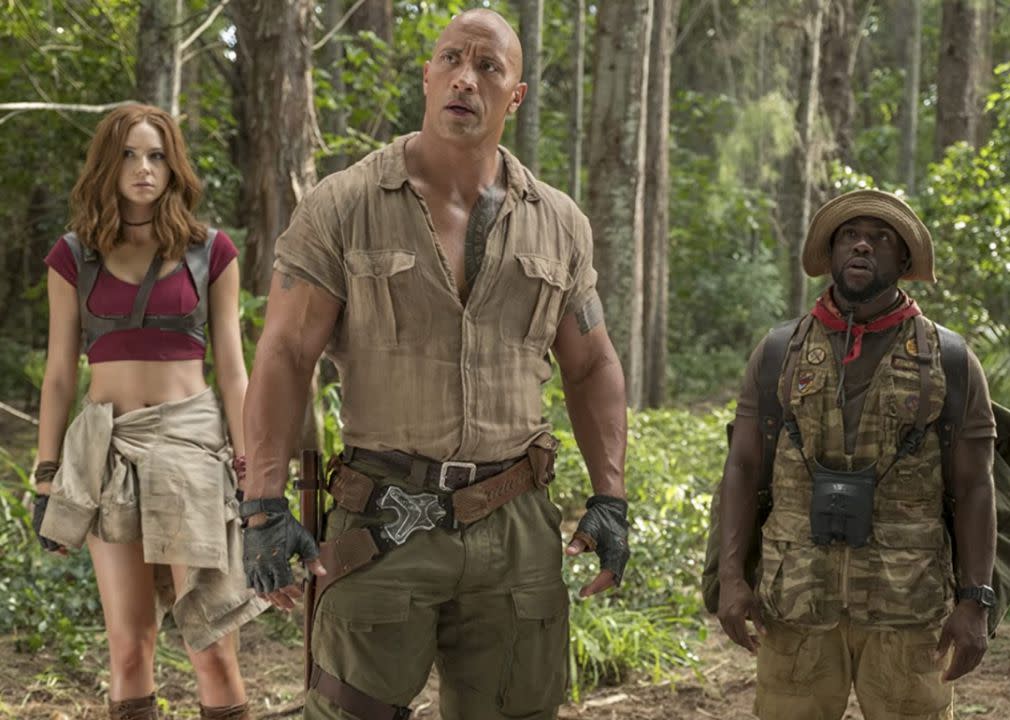Asians and Pacific Islanders ‘silenced, stereotyped, tokenized, isolated’ and cast as sidekicks in Hollywood: study
An exhaustive analysis of Asian and Pacific Islander portrayals in film finds that segment of U.S. population routinely “erased, silenced and stereotyped” in a first-of-its-kind study.
Researchers funded by Amazon Studios and UTA Foundation in collaboration with Nancy Wang Yuen, Stacy L. Smith and the USC Annenberg Inclusion Initiative got granular and did the math.
They combed through 1,300 top-grossing films released between 2007 and 2019, counting each API character, the number of lines they spoke (if any) and, in the case of the most popular 2019 movies, the way primary and secondary API characters were portrayed.

What they found in their 147-page study was that just 5.9% of the 51,159 speaking characters in the 1,300 movies were Asian or Pacific Islanders, a percentage that “did not meaningfully differ by year and falls short of the 7.1% of the U.S. population that identifies as API,” the researchers said in a statement.
Moreover, examining the 2019 films revealed that underrepresentation is just part of the story. Two-thirds, or 67.4%, of the films studied failed to proportionally represent the API community, and 39% of all the movies left out API characters entirely.
Separate examinations of Asian and Pacific Islander representation found that 40.2% of films had zero Asian characters, and a whopping 94.2% “did not include even one Pacific Islander,” the study found.
Just 3.5%, or 44, of the 1,300 films had an API lead or co-lead during the entire 13 years, and a mere six featured an API woman in such a role, the study found, a statistic that “translated into only 22 individual API actors and only four API women.”
Moreover, in 14 of the 44 films that actor was Dwayne Johnson, aka The Rock, whose mother is Samoan, as the Los Angeles Times pointed out. In contrast, during the same time frame, 336 white male actors played leads or co-leads, the study found.
Part of this could be the lack of Asian directors, if the statistics there were any indication. Only 3.5% of the films studied had API directors, and just three of them over 13 years were women.
“The voices of API characters are not only missing in leading roles,” they said. “Across 200 top-grossing films from 2018 and 2019, 74.7% of tertiary or minor API characters spoke five lines or less of dialogue.”
Characterizing API community portrayals as ranging “from invisible to fully human,” the researchers found that most of those portrayals fell into a trope of being “silenced, stereotyped, tokenized, isolated, and sidekicks/villains.”
Asian men were rarely depicted as having romantic partners, which contributes to the emasculation of Asian men, another form of stereotype.
The skewed portrayals and invisibility were especially stark in light of the negative attention heaped upon people in the API community outside the movies, as violence against them has increased during the coronavirus pandemic. And in the movies, many Asian-inspired characters meet violent ends.
“With the rise of anti-AAPI violence in the United States, on-screen deaths of Asians and Pacific Islander characters are particularly jarring,” Yuen said in the researchers’ statement. “In the top 100 films of 2019, just over a quarter of Asian and Pacific Islander characters die by the end of the film and all but one death ended violently. This, along with 41.8 percent of API characters receiving on-screen disparagement — some of which are racial slurs--films can fuel anti-AAPI hate. With over 6,603 hate incidents reported to Stop AAPI Hate from March 19, 2020 to March 31, 2021, Hollywood needs to take responsibility for problematic representations of Asians and Pacific Islanders.”
